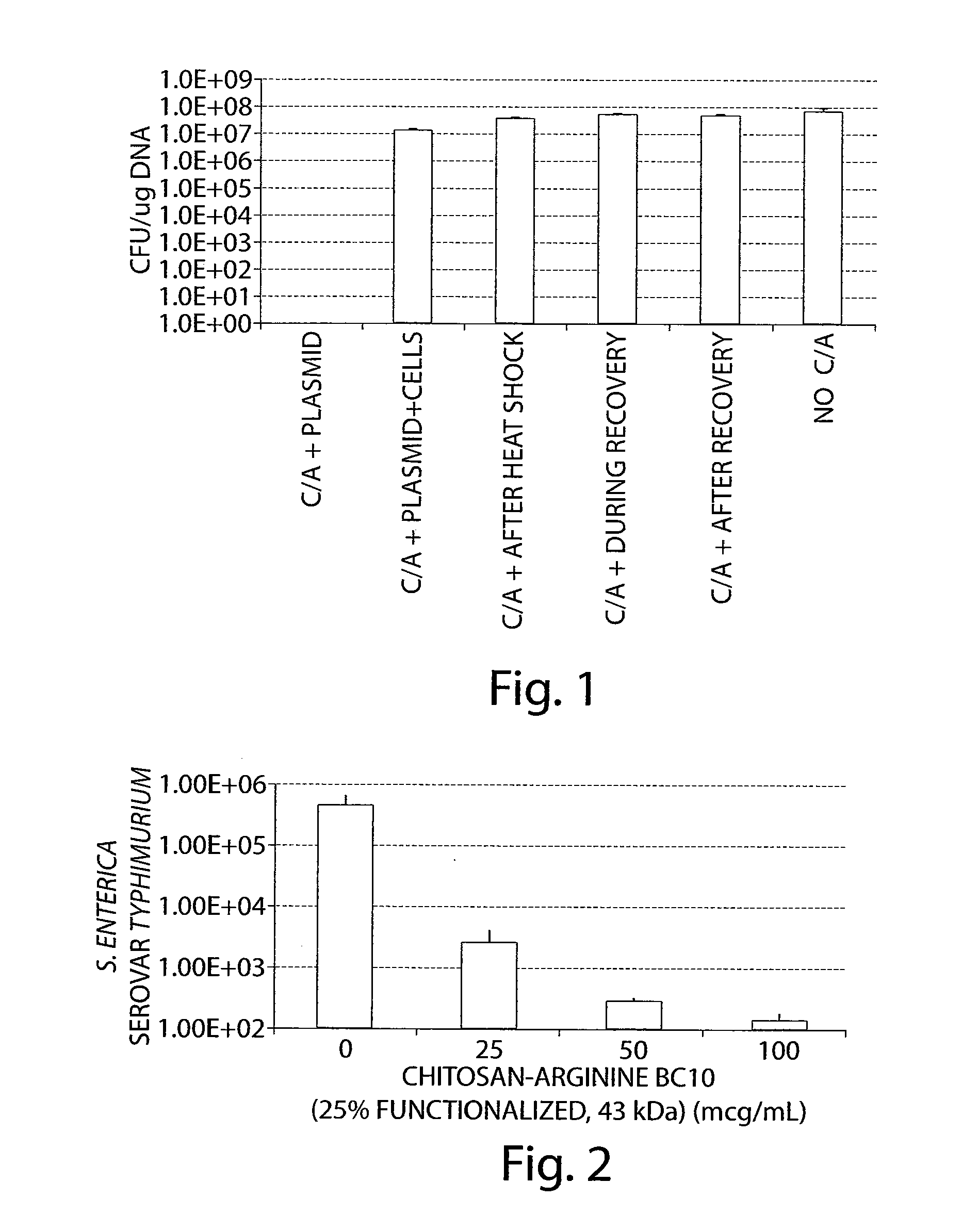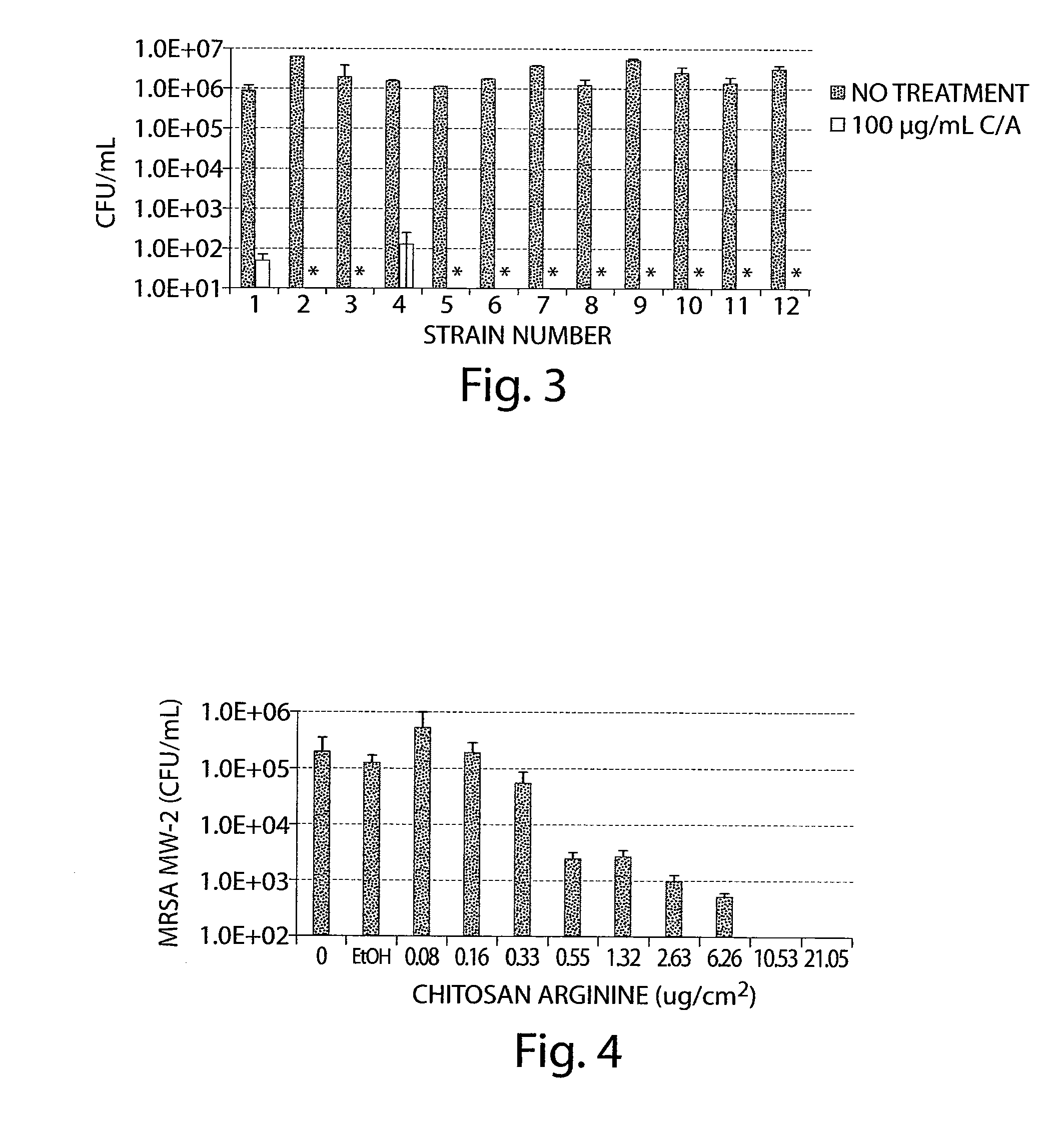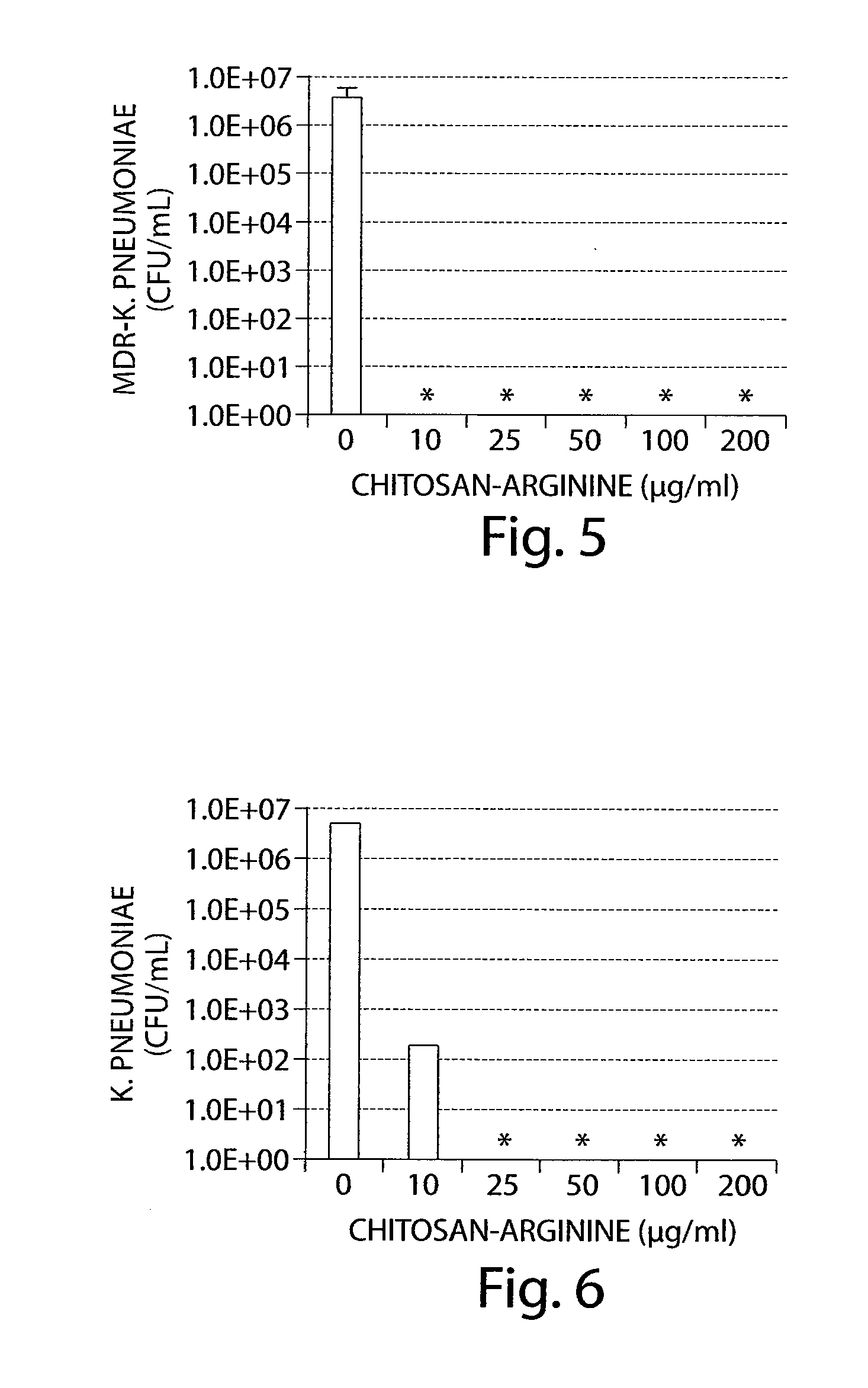Chitosan derivatives, compositions and related methods of use
a technology of chitosan and derivatives, applied in the direction of sugar derivates, antibacterial agents, biocide, etc., can solve the problems of limiting the contribution of antibacterial agents and the reluctance of medical practitioners to overuse existing antibacterial agents
- Summary
- Abstract
- Description
- Claims
- Application Information
AI Technical Summary
Benefits of technology
Problems solved by technology
Method used
Image
Examples
example 1
Inhibition of Plasmid Transformation by Chitosan-Arginine
[0511]Plasmids containing genes conferring resistance to a drug can be taken up by bacteria, and those bacteria become drug resistant. Chitosan-arginine prevents the spread of antibiotic resistance by interfering with this horizontal gene transfer.
[0512]The pUC19 plasmid DNA confers resistance to Ampicillin The plasmid was transformed into E. coli FB5a (Fisher) competent cells via heat shock. Control E. coli which had not been transformed were all killed by the placement of the bacteria on agar plates supplemented with 100 μg / mL of Ampicillin Cells that had been transformed were resistant and did not die. Control cells were not resistant and did die.
[0513]In this study, chitosan-arginine was added at various times in the transformation cycle to demonstrate where the chitosan-arginine interacts with the plasmid. The control experiment utilized 50 pg of pUC19 plasmid in 5 μL DNA in water. The plasmid was added to 100 μL of E. co...
example 2
Killing of Multi-Drug Resistant Salmonella enterica Serovar typhumurium with Chitosan-Arginine in Water
[0518]Multi-drug resistant Salmonella enterica serovar Typhimurium strain DT104 (ATCC#700408) was tested for sensitivity to chitosan-arginine (C / A; Lot BC10; 25% functionalization, 43 kDa, 2.28 PDI, 88% DDA) in a standard bactericidal assay. Specifically, approximately 106 bacteria / mL were resuspended in water alone or with chitosan-arginine concentrations of 25, 50, or 100 μg / mL in a total volume of 200 μL in a 96-well assay plate. The plate was left at room temperature for 24 hours then cells were centrifuged and resuspended in water, diluted, and plated to obtain surviving cfu.
[0519]As shown in FIG. 2, chitosan-arginine inhibited the growth of Multi-drug resistant Salmonella enterica serovar Typhimurium strain DT104 (ATCC#700408) in water in a dose dependent manner.
[0520]DAVID NOTE THAT I NEEDED TO TAKE OUT THAT FIGURE B SO UNFORTUNATELY WE NEED TO RENUMBER THE EXAMPLES. FIgUrES...
example 3
Killing of Methicillin-Resistant Staphylococcus aureus Clinical Isolates with Chitosan-Arginine
[0521]S. aureus, a Gram-positive species, has traditionally been a complication in battlefield injuries. While other pathogenic bacteria are beginning to emerge with similar activity, mupirocin and methicillin resistant S. aureus (MRSA) are increasingly disconcerting due to their increasing antibiotic resistance. Current treatments are expensive and utilize potentially toxic drugs with unsavory side effects such as colistin, imipenem-cilastatin and vancomycin for extended periods of time.
[0522]Twelve strains of clinical isolates were acquired from Providence Medical Center (Portland, Oreg.) to test the ability of chitosan-arginine to kill a variety of active MRSA strains. The MRSA were isolated from various sites of infection / colonization and included three each from the skin (strains 1-3), respiratory tract / sputum (strains 4-6), blood (strains 7-9), and nasal orifice (strains 10-12). In t...
PUM
| Property | Measurement | Unit |
|---|---|---|
| molecular weight | aaaaa | aaaaa |
| pH | aaaaa | aaaaa |
| pH | aaaaa | aaaaa |
Abstract
Description
Claims
Application Information
 Login to View More
Login to View More - R&D
- Intellectual Property
- Life Sciences
- Materials
- Tech Scout
- Unparalleled Data Quality
- Higher Quality Content
- 60% Fewer Hallucinations
Browse by: Latest US Patents, China's latest patents, Technical Efficacy Thesaurus, Application Domain, Technology Topic, Popular Technical Reports.
© 2025 PatSnap. All rights reserved.Legal|Privacy policy|Modern Slavery Act Transparency Statement|Sitemap|About US| Contact US: help@patsnap.com



